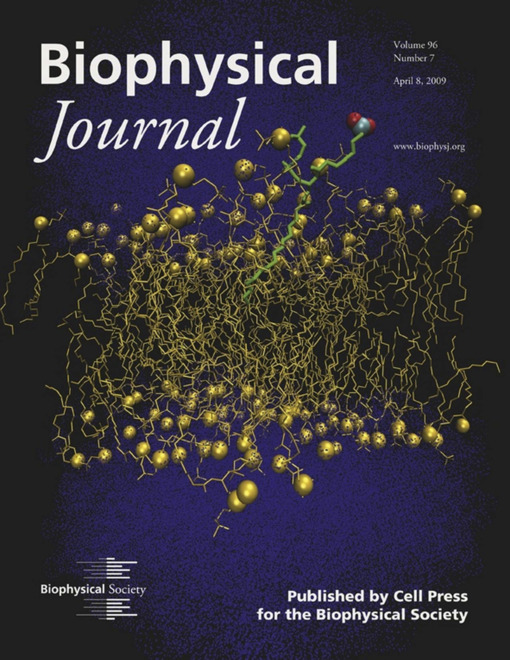The aim of this project is to understand the role of Oxidized Phospholipids (OXPLs) in the genesis of diseases and modulation of membrane properties. To this end, the effect of OXPLs on the structure and dynamics of phospholipid membranes, and of host species residing in the membrane are elucidated using Molecular Dynamics (MD) simulations. OXPLs participate in the genesis of serious ailments including cancer, inflammation, apoptosis, Alzheimers and heart disease. The mechanism leading to OXPL-mediated diseased conditions is still largely unknown because research in this area is still preliminary, and there is a lack of understanding of the involved processes on the molecular and cellular levels. In combination with analytical measurements, the simulations will ultimately leading to a better understanding of the role of OXPLs in membrane biology and disease. We were associated with the FP7 EUROMEMBRANE consortium OXPL (2010-2012).

Relevant Publications
Siani, P., de Souza, R. M., Dias, L. G., Itri, R., and Khandelia, H. (2016) An overview of molecular dynamics simulations of oxidized lipid systems, with a comparison of ELBA and MARTINI force fields for coarse grained lipid simulations, Biochim. Biophys. Acta
Khandelia, H., Loubet, B., Olzynska, A., Jurkiewicz, P., and Hof, M. (2014) Pairing of cholesterol with oxidized phospholipid species in lipid bilayers, Soft Matter 10, 639-647.
Conte, E., Megli, F. M., Khandelia, H., Jeschke, G., and Bordignon, E. (2013) Lipid peroxidation and water penetration in lipid bilayers: A W-band EPR study, BBA: Biomembranes 1828, 510-517.
Hermetter, A., Kopec, W., and Khandelia, H. (2013) Conformations of double-headed, triple-tailed phospholipid oxidation lipid products in model membranes, Biochim. Biophys. Acta 1828, 1700-1706.
Khandelia, H. and Mouritsen, O.G. (2009) Lipid gymnastics: evidence of complete acyl chain reversal in oxidized phospholipids from molecular simulations, Biophys. J., 96, 2734-2743.
